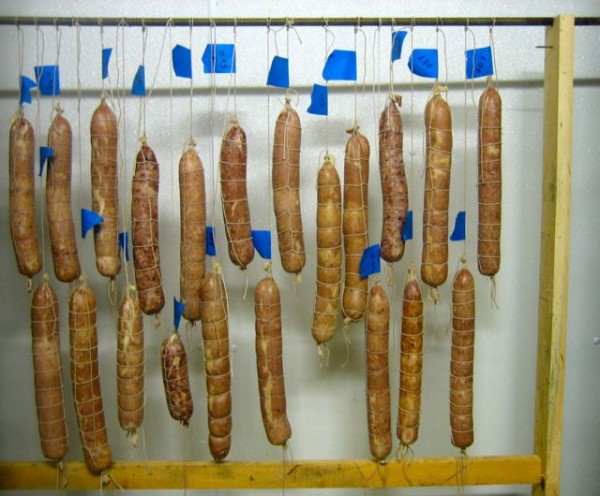 What goes better with an old gnarly piece of Maggie’s than a hunk of fermented and dry-cured sausage? In my mind nothing at all, but a nice crisp sour apple may complete the triumvirate of my palate.
What goes better with an old gnarly piece of Maggie’s than a hunk of fermented and dry-cured sausage? In my mind nothing at all, but a nice crisp sour apple may complete the triumvirate of my palate.
On Friday, with the help of my best friend and cheesery extraordinaire, Suzy, I delved into the art and science of making my own old-world style sausage. I drew from the books Salumi by Michael Rhulman and The Art of Making Fermented Sausages by Stanley Marianski and Adam Marianski which were both very valuable for technical information, recipes, and helping me get over the intimidation factor of fermenting ground meat. Special thanks also to Joji Sumi and Jeremy Stanton!
We made a very simple Salami. The core ingredients were pork shoulder, sirloin, backfat, salt, pepper, and red wine. I also used a bit of curing salt (slow time-released sodium nitrite) and a beneficial starter culture to ward off any worrisome bacteria. Time and the proper aging environment will be prove to be the most important ingredients. The process involved grinding the meat and seasoning, stuffing the sausage into beef middles (casings), tying up with a bubble knot and a series of hitches (to hang from), hanging the sausages in a warm ferment chamber with high humidity for half a day, and then transferring them into a drying chamber which is significantly cooler and less humid. The goal is to reduce the weight by 30 percent. In some weeks time when we reach the target weight, we’ll slice into one, likely at a Cricket Creek Pot-Luck!, to see how they are progressing. From there we can hope to enjoy them for months. I am very excited!
This is a great use for less popular cuts of meat. If you are interested in fermented meats, I recommend trying it in your kitchen, just make sure you do your homework first! Keep it safe!
